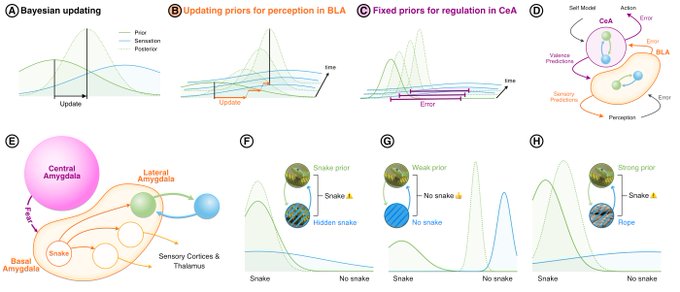Maybe the amygdala is not angry or sad or afraid – it’s just misunderstood!
More than 10 years I’ve been wondering how to link my amygdala research with predictive processing. With the invaluable help from my interdisciplinary colleagues and friends it worked out: a bit inspiration, hard work, and letting go of unnecessary clutter.

We want to inspire amygdala research by suggesting a unified narrative grounded in biological fundamentals (self-regulation) and a computational framework (Bayes). By proposing an active inference perspective, we reframe previously fragmented amygdala research topics:
1. Fear/anxeity: we see the amygdala as a mediator between interoception and exteroception. The central amygdala acts as a Bayesian regulator to inform affective states. It sends predictions to the basolateral amygdala, which allows efficient perception.
2. Danger detection: how do we distinguish a snake from a rope? The context matters: if you are afraid of encountering snakes (e.g., because you’re in the jungle) you are more likely to (mis)identify a snaky object as a snake. Not so much on a relaxing sailing cruise.
3. Fear conditioning: results from predictive processing and anticipating the future. Using exteroception the amygdala helps to predict deviations from optimal regulation (e.g., pain) before they happen. I call this a pro gamer move if you want to survive.
4. Actions: some sensations feel better than others. Approach and avoidance actions can make more preferred expected sensations become reality. It’s like magic. If it hurts in a bad way and you avoid it before it hurts, it does not hurt.
